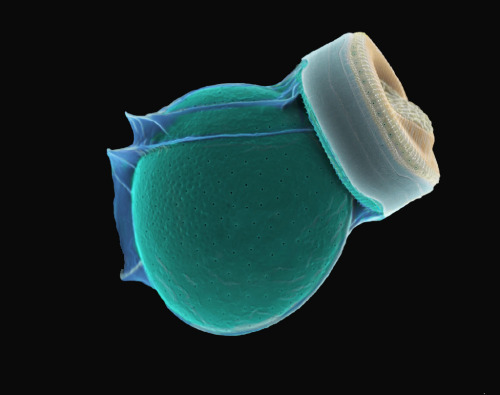Bioluminescence
What is it?
The phenomenon is a form of chemiluminescence made by a living organims,
where light energy is released by a chemical reaction. This reaction
involves a light-emitting pigment, the luciferin, and a
luciferase, the enzyme component. Bioluminescence occurs widely
in marine vertebrates and invertebrates, as well as in some fungi,
microorganisms including some bioluminescent bacteria, and terrestrial
arthropods such as fireflies. In some animals, the light is
bacteriogenic, produced by symbiotic bacteria such as those from the
genus Vibrio; in others, it is autogenic, produced by the
animals themselves.
The French pharmacologist Raphaël Dubois carried out work
on bioluminescence in the late nineteenth century. He refuted the old
idea that bioluminescence came from phosphoru and demonstrated that the
process was related to the oxidation of a specific compound, which he
named luciferin, by an enzyme.
The most frequently encountered bioluminescent organisms may be the
dinoflagellates in the surface layers of the sea, which are responsible
for the sparkling phosphorescence sometimes seen at night in disturbed
water. At least 18 genera exhibit luminosity. A different effect is the
thousands of square miles of the ocean which shine with the light
produced by bioluminescent bacteria, known as
mareel or the milky seas effect . Bioluminescence is generated as well by a plankton called
Noctiluca scintillans, known as “sea sparkle”. This microscopic
organism produces flashes of light in response to physical disturbances.
By the satelite data from 1995 is obvious that bioluminescence on the
ocean can be detected also with the satelite on orbit.
Learn more on Marine magazine 📖

How we can use it ?
-
Previously
Glowing fungi have been used by tribes to light the way through dense jungles. Fireflies were used by miners as an early safety lamp.
-
In laboratory
Luciferase-based systems are used in genetic engineering and biomedical research. Researchers are also investigating the possibility of using bioluminescent systems for street and decorative lighting, and a bioluminescent plant has been created. Bioluminescence from Aliivibrio fischeri is used to monitor water toxicity.
-
In genetic engineering
Luciferase systems are widely used as reporter genes, each producing a different color by fluorescence and for bioluminescence imaging. Bioluminescent activated destruction is an experimental cancer treatment. In optogenetics which involves the use of light to control cells in living tissue, typically neurons, that have been genetically modified to express light-sensitive ion channels. In 2008, the Nobel Prize in Chemistry was awarded for the discovery and development of green fluorescent protein (GFP) which is found naturally in the crystal jellyfish Aequorea victoria, which is fluorescent. This means that the protein needs to be excited by blue light before emitting its characteristic green light. Since its discovery, GFP has been genetically inserted into various cell types and even animals to shed light on important aspects of cell biology and disease dynamics. In April 2020, scientists reported to have genetically engineered plants to glow much brighter than previously possible.
-
In industrial desing
Glowee, a French company started selling bioluminescent lights, targeting shop fronts and municipal street signs. Engineered bioluminescence could perhaps one day be used to reduce the need for street lighting, or for decorative purposes. University of Wisconsin–Madison is researching the use of genetically engineered bioluminescent E. coli bacteria, for use as bioluminescent bacteria in a light bulb.
-
In army
At Shiloh, in the time of American Civil War, the wounds of some of the injured soldiers began to glow. These glowing wounds healed more quickly.The phenomenon became known as “Angel’s Glow” . The glow was probably produced by Photorhabdus luminescens, a soil-dwelling bacterium which releases antimicrobial compounds and possibly protected the soldiers from infection.
The sea-firefly is a small crustacean living in sediment. At rest it emits a dull glow but when disturbed it darts away leaving a cloud of shimmering blue light to confuse the predator. During World War II it was gathered and dried for use by the Japanese military as a source of light during clandestine operations.
United States Navy used bioluminescence in the Cold War, since submarines in some waters can create a bright enough wake to be detected; a German submarine was sunk in the First World War, having been detected in this way. The navy was interested in predicting when such detection would be possible, and hence guiding their own submarines to avoid detection. -
In fashion
A fashion designer Vera Wang used luminesce in her Bioluminescent couture collection. As you can see here💃
-
In art
Bioglyphs involves practice of painting on Petri dishes with ink made of liquid medium inoculated with the bacteria. Luminescence start in 24 hours after application. Next 5 days the light intensity of paintings changed as the bacteria multiplied and then gradually consumed the nutrient available.
-
Others
You can even have it at home as a pet. Don`t belive me? Just CLICK 🧫 and check it on your own.
Where you can see it?
Glowing plankton can be seen at many beaches all around the world. In
2008, The Guinness Book of World Records officially declared the
location where the brightest glowing plankton on the planet can be seen
– it is in Puerto Rico. Namely, Isla de Vieques.
Here are some of the most popular spots which are magically glowing: Vaadhoo and Mudhdhoo Islands in Maledives, Jervis Bay in Australia
Tasmania, Gippsland Lakes in Victoria, Koh Rong Islands in Cambodia, Thailand, Japan`s Toyama Bay, Indian River Lagoon
(Cocoa Beach) in Florida, Taiwan's Beigan Island and many more.
Let me show you the beauty 😉. Click on plankton:

🌺 Trip to Puerto Rico 🌴
Are you interested to join us on trip to Puerto Rico? As one Japanese saying said: "it is better to see once, than hear 100 times". So if you are interested to see this natural phenomenon on your own eyes. Let join us ✈ on amazing TRIP!